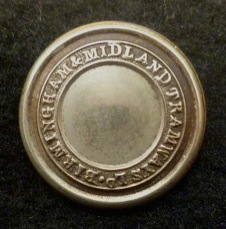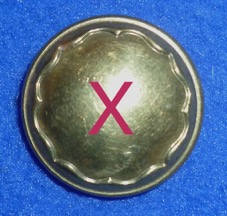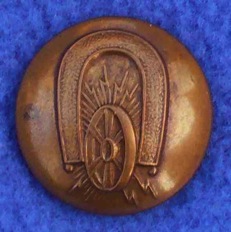Birmingham and Midland Tramways
Owner Birmingham and Midland Tramways Limited
Opened 6th July 1885 (steam)
Operator Birmingham and Midland Tramways Limited (which took over ownership of lines from the constructor, the Birmingham and Western Districts Tramway Company, as they were completed); the Summer Row to Cape Hill (Smethwick) portion of the tramway was operated under a lease agreement from the owners, Birmingham Corporation
Taken over (operation) 20th May 1893 (Mr B Crowther) - Spon Lane and Bromford Lane services (horse)
Taken over (company) January 1900 (British Electric Traction Company)
Taken over 31st December 1901 (West Bromwich Corporation) - lines within municipal boundary, leased back to the company for 21 years
Taken over 11th August 1902 (Smethwick Urban District Council) - lines within the municipal boundary; leased back to the company for 21 years
Last horse service 3rd November 1903
First electric service 3rd November 1903 (worked by cars of the BETCo-owned South Staffordshire Tramways [Lessee] Company) - Spon Lane and Bromford Lane services within West Bromwich
Took over 1st July 1904 (City of Birmingham Tramways Company; Dudley, Stourbridge and District Electric Traction Company; Kinver Light Railway; South Staffordshire Tramways [Lessee] Company; Wolverhampton District Electric Tramways Limited) all controlled by the BETCo and administered by the newly formed Birmingham and Midland Tramways Joint Committee
Took over (operation) October/November 1904 (SST[L]Co) - Spon Lane and Bromford Lane services
Last steam service 23rd November 1904
Taken over 1st January 1909 (Dudley Corporation) - lines within the municipal boundary; leased back to the company for 30 years
Name changed 13th August 1912 (to the Birmingham District Power and Traction Company)
Took over (management) October 1915 (Kidderminster and District Electric Light and Traction Company)
Last BDP&TCo-operated service 31st March 1928
Taken over (operation) 1st April 1928 (Birmingham Corporation) - main line from Cape Hill (Smethwick) to Dudley
Taken over (operation) 1st April 1928 (DS&DETCo) - last remaining former B&MTL services (Spon Lane and Bromford Lane)
Company name changed 18th December 1929 - to the Birmingham and District Investment Trust Limited
Last B&DITL tram service withdrawn 30th September 1930 - Darlaston routes, operated either by the SST(L)Co or directly by the B&DITL
Taken over 31st December 1938 - remaining company-owned track compulsorily purchased by local authorities
Length 12.87 miles (B&MT only)
Gauge 3ft 6ins
Button description (1885 to circa 1887) Title (‘BIRMINGHAM & MIDLAND TRAMWAYS LD) within a border, with a plain centre
Materials known Nickel
Button Line reference [None]
Button description (circa 1887 to circa 1904) Uniforms not worn
Button description (circa 1904 onwards) Wheel, magnet and electrical flashes
Materials known Brass; chrome; black horn
Button Line reference [113/16]
Comment The first pattern of button was probably worn by steam tram conductors from 1885 through to around 1890 (possibly earlier), when the company appears to have ceased to issue uniforms. The British Electric Traction Company (owner from 1900) had a common approach to all its subsidiaries, so staff working the electric services (from 1904 onwards) would have worn uniforms bearing BETCo 'Magnet and Wheel' buttons. It is probable that the BETCo eventually provided uniforms to steam and horse-tram conductors, though there is currently no photographic evidence to support this.
The history of BETCo-owned tramways in the Black Country is a complex one. The BETCo essentially started by acquiring an interest in several local tramways (Dudley and Wolverhampton Tramways; Dudley and Stourbridge Steam Tramways; and South Staffordshire Tramways) in 1897, then rapidly expanded its influence by gaining control of several other tramways. On the 1st July 1904, the BETCo transferred its shares in these companies to Birmingham and Midland Tramways Limited, a company which it directly controlled. The six tramways (later seven) were thereafter managed as a single concern by the Birmingham and Midland Tramways Joint Committee (from October 1915, the Birmingham and Midland Joint Committee of Electricity, Tramways and Motor Omnibus Undertakings), which comprised board members from the individual concerns:
- Birmingham and Midland Tramways (via the Birmingham and Midland Tramways Limited)
- City of Birmingham Tramways (via the City of Birmingham Tramways Company) - until 1912
- Dudley, Stourbridge and District Electric Tramways (via the Dudley, Stourbridge and District Electric Traction Company)
- Kidderminster and Stourport Electric Tramway (via Kidderminster and District Electric Light and Traction Company) - from October 1915
- Kinver Light Railway (owned by the DS&DETCo)
- South Staffordshire Tramways (primarily via the South Staffordshire Tramways [Lessee] Company)
- Wolverhampton District Electric Tramways (via Wolverhampton District Electric Tramways Limited)
The B&MTJC worked in partnership with many local authorities, some of which owned the tramway lines within their municipal boundaries, but leased them to one of the B&MTJC's constituent tramway companies. Many of these authorities harboured transport ambitions of their own, which were ultimately to be the downfall of the B&MTJC's network, the last of its services being taken over by Walsall Corporation in 1930.


